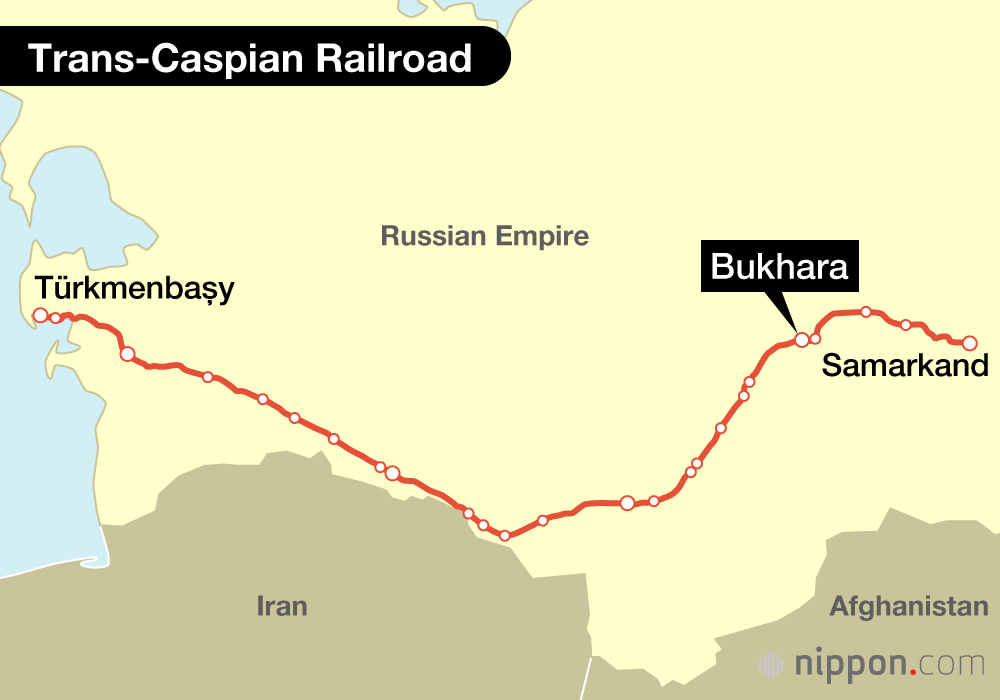
Hints to Understanding COVID-19 in a Nineteenth-Century Pandemic?
Science Society Culture World Environment- English
- 日本語
- 简体字
- 繁體字
- Français
- Español
- العربية
- Русский
The COVID-19 pandemic spread rapidly around the globe. It is likely the most formidable virus humans have encountered since the influenza pandemic that raged from 1918 to 1920. While in comparison to past pandemics, our fight against COVID-19 benefited from vaccines that were developed in record time, as if to mock our efforts, the virus has continued to mutate, and there remains no end in sight to the pandemic.
It astounds me that now, in the twenty-first century, humankind has once again found itself at the mercy of a virus less than 1/10,000 of a millimeter long that has turned our lives upside down and even disrupted the global economy. In fact, though, COVID-19 is a virus with an unimaginable past.
“Clever” About Humans?
A French friend whom I got to know while working for a United Nations agency in Africa recently visited Japan with his wife while on holiday. It was the autumn of 2021, and Japan was in a period of respite after its fifth COVID-19 wave. A virus “hunter” himself, my friend spends his time seeking out pathogenic viruses in Africa. In his role as a member of a World Health Organization team, he has spent years pursuing the deadly viruses that cause Ebola, Lassa fever, and Marburg disease, as well as the organisms that host them.
I once went along on one of my friend’s “hunts.” Decked out in hazmat suits in the humid tropics of West Africa, we pushed deep into the tropical jungle, where we caught bats in traps, netted insects over swamps while getting covered in mud, and bought monkey meat at markets deep in the forest, to study the viruses that these organisms contained. I was in awe of the way my friend put his all into his research. He is someone who truly deserves the title of “hunter.”
I had not seen my friend for some time, and our conversation naturally turned to COVID-19. I had been struck by the idea that the SARS-CoV-2 virus displayed an uncanny “cleverness” in its interactions with humans. When I put this to my friend, he nodded in agreement. For example, while influenza has an incubation period of 1 to 3 days, COVID-19 can lie low for up to 2 weeks, and about 20% of those infected are asymptomatic despite being infectious. This makes you appreciate just how cunning COVID-19 is. Whenever there is a sharp drop in cases that makes you optimistic that the virus will disappear for good, another wave roars through the community.
COVID-19 initially targeted vulnerable elderly people. However, just when this group had been vaccinated and everyone were starting to relax, the virus began spreading among the young, who tended to be unvaccinated. Later, once this group had been vaccinated as well, a new, vaccine-resistant strain appeared. It is as if COVID-19 had a mind of its own and was toying with the human population. One is almost tempted to conclude that the virus is staying a calculated distance from the human population: tormenting it, but not killing it.
Later, I myself fell victim to the virus. While my symptoms were relatively mild, I was left with no sense of taste or smell, resulting in 10 days of nothing tasting good. While the flu can also affect the senses of smell and taste, reports suggest that between 40% and 60% of those who contract COVID-19 lose their sense of taste or smell, a proportion significantly higher than that seen with other contagious diseases.
Wily RNA Viruses
Viruses have a simple structure that consists of genetic information encapsulated by a shell or membrane. Viruses range in size from 1/100 to 1/1,000 the size of a grain of pollen, and come in such a wide variety of forms that you sometimes can’t believe that all are members of the same family. Viruses are divided into two main categories, depending on whether they are composed of DNA (deoxyribonucleic acid) or RNA (ribonucleic acid). DNA viruses in many cases invade the nuclei of the host organism’s cells before using the oxygen in these cells to copy their own DNA in order to reproduce. RNA viruses, on the other hand, cannot make their hosts produce viral copies. Rather, RNA viruses use their own genetic information to replicate within host cells.
Unlike germs, viruses are unable to synthesize proteins. Therefore, in order to reproduce, a virus must invade the host organism’s cells armed with a DNA or RNA blueprint, in order to make the cells produce a large number of viral copies. The infected cells then die, no longer able to produce proteins. This is viral infection.
The more familiar DNA viruses include the adenoviruses that cause the common cold, the herpes viruses that causes chickenpox, and the human papillomavirus that causes cervical cancer. RNA viruses, on the other hand, are varied and highly prone to mutation, making them a trickier to handle and more likely to wreak havoc on the community. COVID-19 is a member of the RNA virus family that includes influenza, rubella, hepatitis C, and HIV.
Changing to Survive
While viruses reproduce by copying their genes, sometimes translation errors cause this genetic information to change. Such errors are said to arise around once in every million copies, with significant errors causing mutations. This trait is in fact believed to be a survival strategy that enables viruses to adapt to environmental changes by changing their genetic information. While a vaccine will confer immunity against a virus, that virus will then undergo a near infinite number of mutations, and when eventually a mutation comes along that is able to evade the vaccine, the virus will spread once again.
In his On the Origin of Species, Charles Darwin wrote: “Whatever the cause may be of each slight difference in the offspring from their parents—and a cause for each must exist—it is the steady accumulation, through natural selection, of such differences, when beneficial to the individual, that gives rise to all the more important modifications of structure, by which the innumerable beings on the face of this earth are enabled to struggle with each other, and the best adapted to survive.”
This is exactly the strategy being employed by COVID-19 right now.
The Pandemic that Ravaged the Russian Empire
As we parted company, my virus-hunting friend remarked that his intuition as a virus specialist made him think that COVID-19 had been causing trouble for some time. Since talking to him, I have been preoccupied with the history of COVID-19, and as a researcher with an interest in the history of infections, I felt compelled to research the subject further.
Due to advances in recent years in genome sequencing and DNA analysis, the search for the origins of viruses, bacteria, and other microorganisms has yielded significant results. While significant progress has been made in analysis at the genetic level, when dealing with infections from the nineteenth century and earlier, because no viral samples or samples of infected host tissue remain, we are forced to rely for the most part on circumstantial evidence, records from the time, personal diaries, and other “low-tech” sources.
I began reading medical journals, books on the history of diseases, and old newspapers and magazines from cover to cover. I was most grateful for the fact that great progress in Internet search technology in the last few decades has made it much easier to obtain large quantities of pertinent information.
Because the initial presentation of the novel coronavirus is similar to that of influenza, there is a possibility that there have been past novel coronavirus pandemics that were confused with the latter. Revisiting data on influenza outbreaks led me to the 1889 outbreak that was known as the worst in the nineteenth century. Several waves of infection over a period of years resulted in many pneumonia deaths around the world.
Spread by Rail
The epicenter of the outbreak was Bukhara, which is today part of Uzbekistan but was at the time part of the Russian Empire. An oasis that has prospered since ancient times due to its status as a strategic stop on the Silk Road, Bukhara’s old city contains many historic buildings and is designated as a world cultural heritage site.
At the time, Europe was ushering in an age of steamships and rail as it expanded its travel network.s Bukhara was an important station on the Trans-Caspian Railway that was opened in 1879 by the Russian Empire, which controlled the region. Joining the east coast of the Caspian Sea to Samarkand, the railway traversed Uzbekistan.

“Train on the Trans-Caspian Railroad,” taken by French photographer Gaspard-Felix Tournachon in 1890.
The railroad precipitated a significant increase in cotton exports to Europe, while lumber, steel, and building materials flowed into central Asia, spurring the region’s development. At the same time, however, a rapid increase in the movement of people and commodities created conditions that were just right to allow viruses to spread rapidly.
In October 1889, a mass outbreak of disease among the residents of Prague filled hospitals within days, causing the city to report high numbers of deaths on an almost daily basis. The virus subsequently spread all over Russia, and records suggest that around 20% of St Petersburg’s 1 million residents were infected, many of whom exhibited pneumonia symptoms. In subsequent outbreaks, the virus spread to young students and workers, causing the closure of schools and factories.
This was a virus that was spread by railroad and steamship. The first wave occurred from October 1889 until December 1890, the second in March and June 1891, and the third from November 1891 until June 1892, before the virus took a brief respite before the fourth wave, which hit from 1893 until 1895.
Many records from the time described an odd cold that resulted in a loss of taste and smell. Many patients also complained from prolonged fatigue that lasted after their recovery from the initial infection, and were afflicted by symptoms very similar to those of COVID-19.
(Originally published in Japanese. Banner photo: A COVID-19 diagnosis facility in the United Arab Emirates in August 2020; the UAE experienced a sharp rise in infections in July that year. © Francois Nel/Getty Images.)
